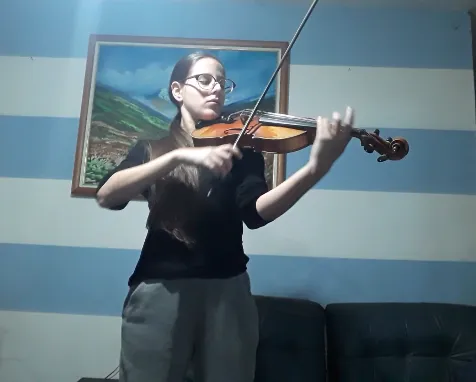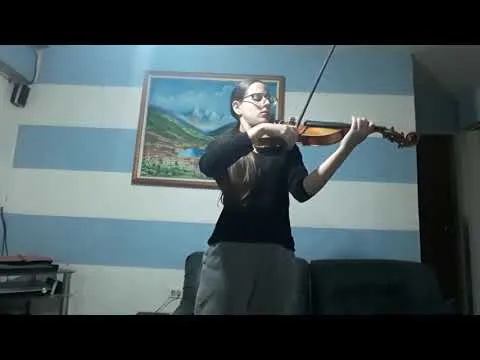¡Hola, queridos amigos de Hive!
Hello, dear Hive friends!
Hoy les traigo un video interpretando un movimiento de una partita para violín solo del gran compositor barroco alemán, Johann Sebastian Bach, y a su vez les explicaré el eterno debate sobre Bach y el estilo a la hora de interpretarlo. ¡Espero que les guste!
Today I bring to you a video performing a movement from one of the partitas for violin solo by the great german baroque composer, Johann Sebastian Bach, and at the same time I will explain to you the eternal debate about Bach and the style when you perform his music. I hope you like it!

Las 6 sonatas y partitas para violín solo de Bach no solo son consideradas muy difíciles técnicamente porque tienen muchas dobles cuerdas en las que el violinista debe hacer varias voces a la vez reflejando el contrapunto, sino por el estilo, ya que al ser Bach un compositor de una época tan antigua aún hay debates sobre cómo interpretar su música, ya que muchos prefieren tocarla al estilo romántico añadiendo más vibrato y un sonido más denso para adaptarlo a nuestra época, pero otros quieren mantener el estilo barroco, en el que tocaban con menos vibrato, y con más aire y ligereza porque los instrumentos eran muy diferentes en ese entonces.
The 6 sonatas and partitas for violin solo by Bach are not only consider very difficult technically because these have many double stops in which the violinist must play different voices at the same time reflecting the counterpoint, but because of the style, since Bach is a composer from an old time there are still debates about how to interpret is music, because some musicians prefer play it in the romantic style adding more vibrato and a deeper sound in order to adapt it to our times, but others want to keep the baroque style, in which they played with less vibrato and with more air and lightness because the instruments were very differents back then.

This image is a screenshop from my own music library
Personalmente no creo que ninguna sea la forma definitiva, siento que hay que aprender a tocar y analizar Bach de varias maneras, porque su música es muy profunda. Ya al final que cada intérprete escoja cómo quiere reflejar esta música cuando toque, después de haber aprendido versiones románticas y barrocas. Aquí en América estamos acostumbrados a tocarlo más hacia el lado romántico, pero estos días tuve la oportunidad de ver clases a través de zoom con unos maestros franceses y ellos compartieron y trabajaron su perspectiva de esta música conmigo, aprendí a tocarlo con más ligereza y con un tempo más movido ya que se trata de una danza. Fue una experiencia completamente nueva y enriquecedora para mí, siempre estaré abierta a nuevas ideas, porque en la música no existe la razón absoluta.
Personally, I do not believe any of those ways is the final one, I think that all of us should learn how to interpret and analyze Bach in different ways, because his music is so deep. And in the end that each interpreter chooses what this wants to reflects this music when this plays, after learning some versions, both romantic and baroque. Here in America we are use to play it more towards the romantic style, but these days I had the opportunity to take lessons through Zoom with two french maestros and they shared and worked their perspective of this music with me, I learned how to play it with lightness and with a forward tempo since this is about a dance. It was a completely new and enriching experience for me, I will be always open to new ideas, because the absolute reason does not exist in music.
Aquí comparto con ustedes un video interpretando el Loure de la partita 3 tratando de aplicar la ligereza que mis maestros de Francia me enseñaron.
Here I share with you a video of me playing the Loure from partita 3 trying to apply the lightness that my mentors from France taught me.
Y como siempre digo, muchas gracias por llegar hasta aquí, ¡espero verlos en mi siguiente post!
And as I always say, thank you so much for reading all of this, I am looking forward to see you in my next post!
My social media
